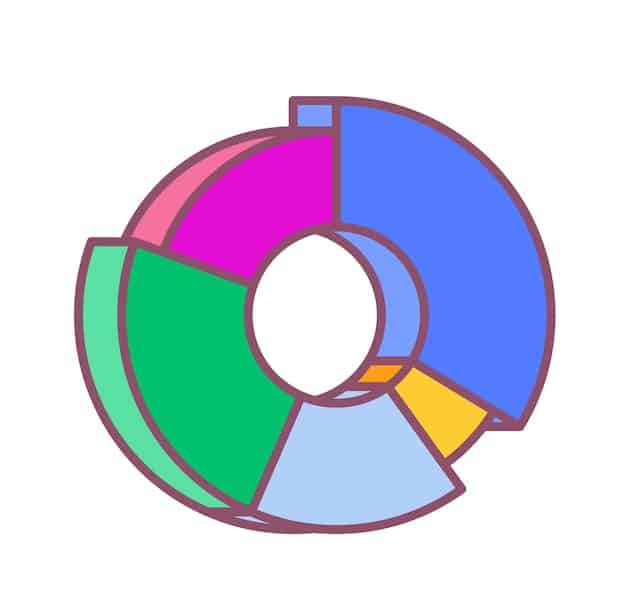PC Gaming Subscriptions: Saving You Money on Games?

Navigating the evolving landscape of PC gaming subscription services requires a critical eye; while they promise access to vast game libraries and cost savings, their true value often hinges on individual gaming habits and the specific offerings of each platform, making a definitive “yes” or “no” to saving money complex and nuanced.
In the dynamic world of digital entertainment, the allure of unlimited access often comes packaged in a subscription model. For PC gamers, this has translated into a burgeoning market of services promising vast libraries of games for a recurring fee. The central question then becomes: PC Gaming Subscription Services: Are They Actually Saving You Money? This isn’t a straightforward “yes” or “no” answer, but rather a nuanced exploration of value, usage, and individual gaming habits.
The Evolution of Gaming Subscriptions on PC
The concept of subscription-based access to entertainment isn’t new; streaming services revolutionized how we consume movies and music. Gaming, however, presented unique challenges due to diverse hardware, large file sizes, and the traditional model of game ownership. Yet, as broadband speeds increased and cloud technology matured, the barriers began to fall, paving the way for the current crop of PC gaming subscriptions.
Initially, these services focused on specific publisher libraries, offering a back catalog of titles. Today, they have expanded dramatically, incorporating new releases, cloud streaming, and exclusive content. This evolution reflects a broader industry shift towards services over pure product sales, mirroring trends seen in other media industries. Understanding this progression is key to assessing their current value proposition.
From Ownership to Access
The traditional model of gaming revolved around buying individual games, whether physical or digital. This provided permanent ownership but also meant significant upfront costs for those who played many titles. Subscription services fundamentally alter this dynamic, shifting the paradigm from ownership to access. For a monthly or annual fee, subscribers gain entry to a rotating library, without the permanent commitment to any single title.
- Reduced Upfront Costs: Instead of paying $60-$70 per new AAA title, gamers pay a consistent, lower monthly fee.
- Exploration Encouraged: The barrier to trying new genres or games is lowered significantly, as there’s no individual purchase risk.
- Library Size: Access to a vast number of games, including older classics and sometimes new releases.
Key Players in the PC Gaming Subscription Arena
The market is now populated by several prominent services, each with its own strengths and nuances. Microsoft’s Game Pass for PC stands out due to its day-one access to first-party Xbox titles and a continually expanding array of third-party games. EA Play (often bundled with Game Pass Ultimate) focuses on Electronic Arts’ catalog, while Ubisoft+ offers a deep dive into Ubisoft’s extensive library, often including premium editions.
Other services like Humble Choice provide curated monthly game selections that gamers get to keep, blending elements of subscription with permanent ownership. NVIDIA GeForce Now and Amazon Luna, though distinct as cloud gaming platforms, also operate on a subscription basis, emphasizing hardware-free access to games you already own or can purchase within their ecosystem.
The diversity among these services means that their value proposition varies wildly depending on a gamer’s preferences and existing game collection. It’s not a one-size-fits-all solution, but a landscape where choice increasingly dictates potential savings.
This shift has profound implications for game discovery and player engagement. Gamers are no longer constrained by the cost of individual titles, allowing for a broader experience across genres. However, it also introduces the challenge of content rotation – games can leave a service’s library, meaning that permanent ownership remains a factor for some players.
Deconstructing the Cost-Benefit Analysis
At the heart of the “saving money” debate lies a careful cost-benefit analysis. On the surface, paying a fixed monthly fee seems like a clear win compared to purchasing multiple full-priced games annually. However, the intricacies of gaming habits, library access, and personal preferences quickly complicate this simple equation.
A true assessment requires looking beyond the sticker price of the subscription and considering how frequently one utilizes the service, the specific games available, and their availability elsewhere. For instance, a gamer who only plays a few select titles each year might find individual purchases more economical than a continuous subscription to a vast library they rarely fully explore.
Comparing Subscription Costs vs. Game Purchases
Let’s consider a hypothetical scenario: A premium PC game typically costs $60-$70 at launch. Many AAA titles maintain this price point for months, sometimes years, post-release. In contrast, most PC gaming subscriptions range from $10-$15 per month. Over a year, this equates to $120-$180.
- One New Game per Month: If a subscriber plays just two new full-priced games within a year via their subscription, they’ve already potentially exceeded the value of purchasing those games outright.
- Back Catalog Value: The true value often lies in the extensive back catalog. Access to dozens or hundreds of older, critically acclaimed games adds significant value that would be prohibitively expensive to acquire individually.
- Sales and Deals: Individual game purchases often come with sales and discounts, potentially making them cheaper than their initial launch price. Subscriptions offer a consistent price regardless of individual game discounts.
The crucial factor here is gaming frequency. For someone who plays myriad titles across various genres, a subscription service can offer undeniable economic benefits. Conversely, if a gamer is highly selective, focusing on just a handful of titles annually, the cost-effectiveness shifts. This personal equation is where the savings truly manifest or dissolve.

The Value of Day-One Access and Exclusives
One of the most compelling arguments for certain PC gaming subscriptions, particularly Xbox Game Pass for PC, is day-one access to new releases. When a highly anticipated game launches, being able to play it immediately as part of a subscription, without an additional purchase, is a significant draw. This removes the upfront cost barrier for new AAA titles that would otherwise significantly impact a gaming budget.
This is especially true for titles published by the subscription service’s parent company, such as Microsoft’s first-party games dropping directly onto Game Pass. For fans of these specific franchises or studios, the value proposition is immense, as it ensures they can always play the latest installments without additional investment beyond the subscription fee.
Beyond new releases, subscriptions often provide access to exclusive content or special editions of games, or premium tiers that include DLCs. While these aren’t always “savings” in the traditional sense, they enhance the overall value delivered for the subscription price, offering more comprehensive experiences than a basic game purchase.
However, it’s also important to consider the fleeting nature of some of these benefits. While day-one access is great, games sometimes leave these services after a period. If a player intends to revisit a game repeatedly over many years, permanent ownership might still be a better long-term investment, despite the initial cost savings from the subscription.
The Hidden Costs and Considerations
While the prospect of a vast game library for a fixed monthly fee is appealing, it’s important to delve into the less obvious factors that influence the true cost and value of PC gaming subscription services. Not everything is as straightforward as it seems, and overlooking these nuances can lead to an inaccurate assessment of savings.
These hidden “costs” aren’t always monetary. They can manifest as limitations on choice, internet dependency, or even the psychological impact of a “fear of missing out” on rented content. A comprehensive view requires acknowledging both the explicit and implicit implications of relying on subscription models for one’s gaming needs.
Internet Dependency and Data Caps
A fundamental requirement for virtually all PC gaming subscription services is a stable and relatively fast internet connection. This is particularly true for cloud gaming platforms like NVIDIA GeForce Now or Amazon Luna, which stream games directly to your device rather than downloading them. While most modern internet connections in urban areas are sufficient, rural users or those with less robust infrastructure might face significant challenges.
- Streaming Quality: High-resolution and low-latency streaming demand substantial bandwidth, which can lead to lag, stuttering, or reduced graphical fidelity if the connection isn’t up to par.
- Data Consumption: Downloading entire game libraries, especially with new titles frequently added, can quickly eat into data caps imposed by some Internet Service Providers (ISPs). Cloud gaming, in particular, consumes significant data during active play.
- Offline Play Limitations: Many services require periodic online verification, even for games downloaded locally. True offline play is often limited or requires specific prior setup.
For gamers facing these connectivity issues or data limits, the perceived savings might be offset by increased internet bills or a degraded gaming experience. It’s a critical consideration that often goes unmentioned in the immediate excitement of accessing a large game library.
Additionally, the reliance on stable internet means that service outages or personal connection issues can render your entire game library inaccessible. Unlike individually owned games stored locally, subscription-based access is inherently tied to continuous online connectivity, introducing a point of vulnerability that traditional game ownership doesn’t have.
Game Rotation and Content Availability
Unlike purchasing a game, which grants you permanent ownership (barring publisher server shutdowns), games on subscription services are often transient. Libraries rotate, with games being added and removed. This means a title you’re actively playing or planning to play might disappear from the service with little notice, forcing a purchase if you wish to continue.
This rotation policy can be a double-edged sword. It keeps the library fresh and encourages players to try new games, but it also creates uncertainty. For gamers who enjoy replaying titles or taking their time to complete them, this can be a significant drawback. The “fear of missing out” (FOMO) can lead to rushed gameplay or unexpected costs if a desired game leaves the service.
Moreover, while the overall number of games might be vast, the availability of specific or highly anticipated titles can vary. Some services excel at new releases, while others focus on deep back catalogs. It’s crucial for prospective subscribers to check if the games they actually want to play are consistently available on their chosen platform.
The transparency regarding game departures is improving with some services providing advance notice. However, for a gamer who invests many hours into a title, the knowledge that it could be gone next month might detract from the long-term value proposition that a subscription offers at face value.
Who Benefits Most from PC Gaming Subscriptions?
The diverse landscape of PC gaming subscriptions means that not every gamer will derive the same level of value or savings. Understanding the ideal user profiles for these services is essential in determining if they align with your personal gaming habits and preferences. It’s about matching the service to the player, rather than assuming universal benefit.
Ultimately, the “savings” are highly individualized. A subscription might be a financial boon for one type of gamer, while for another, it could represent an unnecessary expenditure. This section explores the primary beneficiaries and offers insights into whether you fall into one of these categories.
The Avid Explorer and Genre Hoppers
Gamers who love to explore a wide variety of titles and genres are perhaps the strongest candidates for benefiting from PC gaming subscriptions. If you enjoy trying out new indie games, dipping into different AAA franchises, or experimenting with genres you wouldn’t normally purchase outright, these services are invaluable.
- Reduced Risk: The ability to try a game for free (as part of the subscription) eliminates the financial risk of purchasing a game you might not enjoy.
- Broad Exposure: Subscriptions provide access to hundreds of titles, fostering a broader gaming experience than typically possible through individual purchases.
- Discovery: These platforms often feature curated collections, making it easier to discover hidden gems or overlooked classics you might not have encountered otherwise.
For these “gaming omnivores,” the monthly fee offers an unparalleled opportunity to sample and enjoy a vast library without accumulating a massive digital receipt. The sheer volume of content available far outweighs the cost of a few individual titles, making it a clear win in terms of value and variety.
This type of gamer finds joy in starting new experiences, even if they don’t always complete every game. They are happy to jump from a few hours of an RPG to a quick session of a racing game, optimizing their subscription value by extracting varied experiences from the available library rather than focusing on deep dives into a single title.
Budget-Conscious Gamers and Newcomers
For gamers on a tighter budget, or those just starting their PC gaming journey, subscription services can be a fantastic entry point. Building a substantial game library through individual purchases can be incredibly expensive. Subscriptions offer immediate access to a wealth of content without the steep upfront investment in individual titles.
Newcomers, in particular, can use these services to discover their preferred genres and gaming styles without committing significant funds to each experiment. It’s an effective way to immerse oneself in the world of PC gaming and experience a wide array of titles relatively quickly and affordably. Consider a student or someone building their first gaming PC; a service like Game Pass can provide hundreds of hours of gameplay for a fraction of the cost of buying even a handful of popular games.
Furthermore, these services often include older, classic titles that newcomers might have missed. Access to these back catalogs allows them to catch up on gaming history and critically acclaimed titles that remain popular, all covered by the subscription fee rather than requiring separate purchases.
The ability to jump into a deep library without breaking the bank is a significant advantage, empowering more individuals to enjoy the rich experiences that PC gaming offers. This democratizes access to a certain extent, fostering a more inclusive gaming community by lowering the financial barriers to entry.
When Subscriptions Might Not Be for You
While PC gaming subscriptions offer compelling benefits for many, they are not a universal solution for every gamer. There are specific scenarios and gaming habits where relying on a subscription model might actually lead to less value, or even increased perceived cost, compared to traditional game ownership. It’s crucial for individuals to honestly assess their own patterns before committing to a recurring payment.
Understanding these caveats is as important as recognizing the benefits. Ignoring them can lead to “subscription fatigue,” where a user feels obligated to play games they might not genuinely enjoy, just to justify the recurring expense.
The Niche Player and Deep Diver
If you are a highly selective gamer who focuses intensely on a few specific titles per year, or if your preferences lean heavily towards niche genres not typically featured prominently on broad subscription services, then these platforms might not be cost-effective for you.
- Limited Library Use: If you only play one or two games all year, even if they are on a subscription service, the annual cost of the subscription might outweigh the cost of simply buying those games outright, especially during sales.
- Niche Content: Many niche, independent, or very specific genre games might never make it onto major subscription services. These games often require direct purchase.
- Completionists: For gamers who spend hundreds or thousands of hours perfecting one game, rather than moving between many, the transient nature of subscription libraries means they might eventually need to buy the game anyway if it leaves the service.
For these gamers, the “access” model of subscriptions offers marginal utility. They prefer “ownership” to delve deeply into a title without the pressure of it potentially leaving a service. Their return on investment is measured by hours spent deeply immersed in a few favored games, rather than the breadth of titles they can sample.
Furthermore, players who frequently revisit older titles, even those that once appeared on a subscription service, will eventually find themselves having to re-purchase these games if they are no longer included in the rotating library. This makes perpetual ownership a more practical and potentially cheaper long-term solution for them.
Cloud Gaming: Performance and Ownership Concerns
While cloud gaming services like GeForce Now and Amazon Luna offer a way to play demanding games without powerful local hardware, they introduce their own set of considerations that impact their overall value proposition and whether they genuinely save money.
Firstly, the performance is heavily reliant on internet speed and latency. Even with a decent connection, the visual fidelity and responsiveness might not match that of a locally run game. For competitive players where millisecond delays matter, this compromise can be frustrating.
Secondly, most cloud gaming services don’t provide you with a game library; they provide access to servers that run games you already own on platforms like Steam or Epic Games Store. This distinction is crucial: you are still buying the games, and then subscribing to the streaming infrastructure. While this “saves” on hardware costs, it doesn’t necessarily save on game acquisition costs unless bundled packages are offered.
The overall experience, heavily dependent on the quality of your internet connection and the service’s infrastructure, needs to be weighed against the convenience and hardware savings. For some, the inconsistent performance of cloud gaming platforms might diminish the perceived value and satisfaction, making the investment less worthwhile compared to traditional PC gaming setups.
Moreover, the concept of “ownership” is further diluted with cloud gaming. You don’t possess the game files locally, and your access is entirely dependent on the continuous operation of the service and your subscription to it. This can be a concern for long-term accessibility and game preservation.
Maximizing Your Savings: Strategies for Smart Subscribing
If, after careful consideration, you determine that PC gaming subscription services align with your gaming habits, there are several strategies you can employ to maximize your savings and ensure you’re getting the most value for your money. It’s about being a savvy consumer in a crowded marketplace.
These strategies revolve around smart selection, effective utilization, and being aware of promotional offers. A proactive approach can transform a standard subscription into a true money-saving powerhouse for your gaming budget.
Bundle Deals and Promotional Offers
One of the easiest ways to maximize savings is to take advantage of bundle deals and promotional offers. Many services offer introductory rates, often significantly cheaper for the first few months. Keep an eye out for these to try a service without a major financial commitment.
Furthermore, some services bundle with others. A prime example is Xbox Game Pass Ultimate, which includes Xbox Game Pass for PC, EA Play, and Xbox Live Gold (for console players). This combined offering provides a massive library across multiple platforms for a single, typically reduced, price compared to subscribing to each individually.
Retailers or hardware manufacturers sometimes include subscription trials with new purchases (e.g., a new graphics card might come with a few months of a cloud gaming service). Always check for these hidden gems before paying full price.
Timely promotions around holidays or major gaming events can also offer steep discounts on annual subscriptions. Planning your subscription purchases around these events can lead to substantial long-term savings.
Subscribing during sales events or considering longer-term subscriptions (e.g., annual instead of monthly) can also provide significant cost benefits, as annual plans often come with a built-in discount compared to 12 monthly payments.
Strategic Subscription Management and Rotation
Perhaps the most effective strategy for maximizing savings is active subscription management. Instead of maintaining multiple subscriptions year-round, consider rotating them based on game releases or your current gaming interests.
- Identify Key Releases: Subscribe to a service only when a game you highly anticipate is launching on it day one, or when a significant number of titles you want to play are available.
- Play and Cancel: Binge-play the games you want on a service for a month or two, then cancel your subscription until new, appealing content arrives. This prevents paying for months of inactivity.
- Focus on Current Interests: If you’re currently engrossed in games from one publisher (e.g., Ubisoft), maintaining only that specific publisher’s service might be more economical than a broad library subscription.
This “subscribe, binge, cancel” cycle is a powerful way to leverage the access model without the continuous monthly drain. It requires a bit more active management but can shave off hundreds of dollars annually compared to passively paying for multiple services you don’t always utilize to their full potential.
Many subscription services offer flexible monthly plans precisely for this reason, allowing users to jump in and out as their gaming moods or specific game launches dictate. This agility is key to turning the subscription model into a true cost-saver rather than a default expense.
Monitoring game announcements and the “leaving soon” sections of your preferred services can also inform your subscription management strategy, allowing you to prioritize games before they become unavailable or commit to a service for a specific window of time.
| Key Aspect | Brief Explanation |
|---|---|
| 🎮 Value Proposition | Access to vast game libraries for a fixed fee vs. individual game purchases. |
| 💡 Ideal User | Best for explorers, budget gamers, and those new to PC gaming. |
| ⚠️ Hidden Costs | Internet dependency, data caps, and game rotation impacting long-term access. |
| 📈 Maximize Savings | Utilize bundles, promotions, and strategic subscribe/cancel cycles. |
Frequently Asked Questions About PC Gaming Subscriptions
▼
For casual gamers, it depends. If you play a wide variety of games sporadically, a subscription can be highly cost-effective, providing diverse options without individual purchases. However, if you only play a few specific games very rarely, buying those titles during sales might be cheaper in the long run.
▼
Generally, no. Most PC gaming subscription services provide access to a library of games for the duration of your active subscription. Once your subscription ends, or if a game leaves the service, you typically lose access unless you purchase the game separately. Some services, like Humble Choice, offer games you get to keep permanently.
▼
Game subscription services (e.g., Xbox Game Pass) primarily offer a library of games to download and play locally. Cloud gaming services (e.g., NVIDIA GeForce Now) stream games to your device, typically requiring you to own the game already on a supported platform, saving on hardware but not necessarily game acquisition.
▼
Some subscription services, most notably Xbox Game Pass for PC, frequently offer new AAA titles, especially first-party releases, on day one. This means you can play highly anticipated games as part of your subscription without an additional purchase, providing significant immediate value for fans of those games.
▼
While most services allow local downloads, cloud gaming components and frequent updates benefit from reliable internet. Cloud streaming generally requires at least 15-25 Mbps for HD quality. Even for downloadable games, a stable connection is needed for initial downloads, updates, and periodic license verification.
Conclusion
The question of whether PC Gaming Subscription Services: Are They Actually Saving You Money? is intricate, with no single definitive answer. For the avid explorer, the budget-conscious gamer, or those new to PC gaming, these services can offer undeniable value, providing access to an expansive and diverse library for a fraction of the cost of individual game purchases. The ability to try new titles without financial risk and gain day-one access to new releases represents a significant shift in how many gamers consume content. However, for the niche player, the deep diver, or those with unreliable internet, the value proposition diminishes. Hidden considerations like game rotation, internet dependency, and the difference between access and ownership weigh heavily on the overall cost-benefit. Ultimately, true savings come from a strategic approach: understanding your own gaming habits, leveraging bundles and promotions, and actively managing your subscriptions to align with your current interests. When wielded wisely, PC gaming subscriptions can indeed be a powerful tool for maximizing your gaming enjoyment while keeping your wallet happier.





